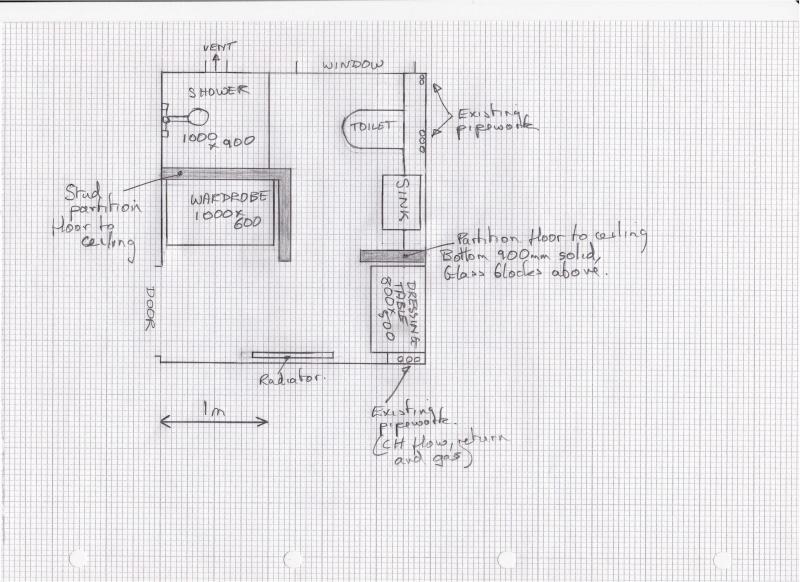Hi
I'm about to have a bathroom completely refurbished and would like to understand the finer points of bathroom electrical zoning before starting to design the new layout.
I want to split the existing bathroom (which is about 2.5m x 2.75m) into a bathroom area and a cloakroom/storage area. If you imagine a roughly square room with it's door at the bottom right, I want to split it so that the laft-hand portion of the room is the bathroom area and the right-hand portion is the cloakroom. The two will be split using stud walls from floor to ceiling.
If access to the bathroom portion is via an additional door set into the stud walling between the two parts of the original room, I assume that the bathroom portion of the room is then defined as a separate room and no zoning restrictions apply within the cloakroom area? Is that correct?
But what if the door set into the stud partition is replaced with an open gap the size of a normal doorway? How does that affect zoning considerations in the cloakroom area?
If my description of the layout isn't clear enough, I'll sketch it out and upload an image.... But the question really boils down to how stud partitioning in a bathroom area affects zoning and, in particular, whether or not a separate door to complete the separation makes a significant difference over having a door-sized gap in the partitioning.
Mike
I'm about to have a bathroom completely refurbished and would like to understand the finer points of bathroom electrical zoning before starting to design the new layout.
I want to split the existing bathroom (which is about 2.5m x 2.75m) into a bathroom area and a cloakroom/storage area. If you imagine a roughly square room with it's door at the bottom right, I want to split it so that the laft-hand portion of the room is the bathroom area and the right-hand portion is the cloakroom. The two will be split using stud walls from floor to ceiling.
If access to the bathroom portion is via an additional door set into the stud walling between the two parts of the original room, I assume that the bathroom portion of the room is then defined as a separate room and no zoning restrictions apply within the cloakroom area? Is that correct?
But what if the door set into the stud partition is replaced with an open gap the size of a normal doorway? How does that affect zoning considerations in the cloakroom area?
If my description of the layout isn't clear enough, I'll sketch it out and upload an image.... But the question really boils down to how stud partitioning in a bathroom area affects zoning and, in particular, whether or not a separate door to complete the separation makes a significant difference over having a door-sized gap in the partitioning.
Mike


